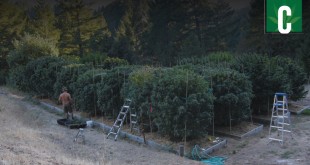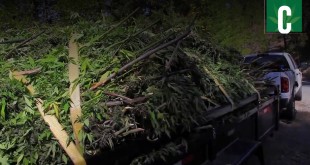It started with hippies and was never the same again.
Utter the words “Humboldt County” to anyone in the United States under 40 and your meaning will be perfectly clear: weed, and lots of it. Part of the famed Emerald Triangle in Northern California, Humboldt has stronger ties to marijuana in the popular imagination than any other place.
But it didn’t get that way overnight. In her new book, Humboldt: Life on America’s Marijuana Frontier, author and investigative journalist Emily Brady explores the tumultuous history and uncertain future of pot in the greenest county in the nation.
Cannabis found its way to Humboldt the same way it initially found its way anywhere in the United States: hippies. They moved from the Bay Area, attracted by ample secluded land, plenty of water for irrigation, and beautify scenery.
Eventually, the Baby Boomers who grew for themselves started selling to others. As weed grew in popularity over the years, Humboldt and its scofflaw residents raked in money they couldn’t get from more traditional industries, like logging.
Law enforcement started playing catch-up by the 1980s, targeting growers with helicopter patrols and troops on the ground. Locals, worried their economy would collapse, rallied for legalization.
Then came medical marijuana in 1996, and Humboldt’s role in the pot industry exploded. Though voters made medicinal use and possession legal, most production in the Emerald Triangle was still illicit and subject to raids by local police and the federal government. Still, it was and is the best stuff to be had in quantity.
Over the decades, Brody writes, marijuana has become such an integral part of Humboldt’s economy that by 2010, when a proposal to legalize all weed was on the California ballot, most county residents voted against it because they feared it would kill the black market and deflate prices.
Indeed, weed is Humboldt County’s economy, its biggest industry by a long shot, something locals are loathe to talk about. Brody spent a year living among them, learning their secretive ways and the difficulties the region faces as marijuana policy changes. Everything from fire departments to school districts depend on cannabis money to stay afloat.
At the same time, many producers want to go legal so they can reclaim the legitimacy of their profession. Others want to remain covert so they can continue to reap outsize profits.
Brady supports legalization as a way to keep non-violent growers out of jail and cut government costs. So do many of the people featured in her book, including a local cop who agrees prohibition makes little sense.
 California Marijuana Market Breaking "Marijuana News" from CA
California Marijuana Market Breaking "Marijuana News" from CA




